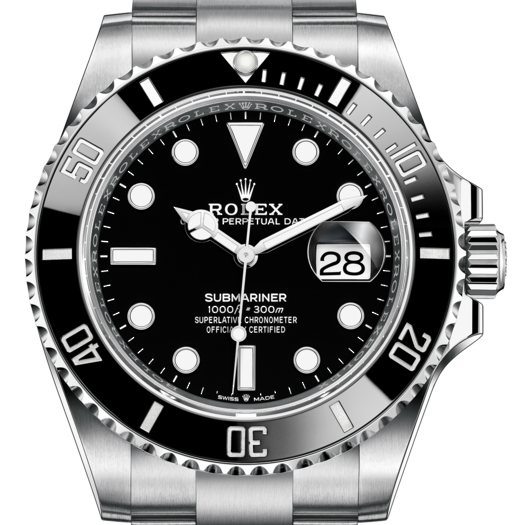Just bought the GWM 5610U-1C. It was a tough decision choosing between the DW5600 and this, ended up choosing this because the atomic time keeping is cool.
However, I’m a tad annoyed that the time doesn’t perfectly match with time.gov and time.is since the atomic sync doesn’t account for time propagation, so there’s like a fraction of a second delay that’s noticeable. Other than that, the watch is fantastic and has most features I would want. (I wish it had barometer and altimeter stuff, maybe even compass, and dive rated so I can press buttons underwater)
Unless time.whateverthefuck is running their own cesium clocks, which I doubt. The gshock should be more accurate when synced. 60khz radio waves sent by NIST travel at the speed of light. That is standard em radio propagation. Your computer meanwhile theoretically does, it runs through God knows many nodes, bounced around until it finally gets back to you. I guess they could try to establish your location and correct, but eh…
Now let’s talk about why your watch can’t transmit. Well it could, but you’d need to carry around a giant antenna and a few kilowatts worth of rms power generation to even be heard over normal background noise at any reasonable distance. The wwvb towers in Denver host an antenna that is electrically one quarter wavelength (1250meters) but obviously not actually that long because that’s 10x the towers. They use a series of coils and stretch horizontally to make up for the rest. They power this antenna 24/7 at 70kw. Part of the reason it’s in Denver is central location to the country for best average timekeeping. Height above ground also rules when it comes to radio waves.
Im not going to go into the code that’s actually transmitted because even as a HAM operator I don’t know it all myself, but just know that it uses a system of 1s and 0s by pulsing the carrier wave to tell ever clock that’s listening “it will be 2:35pm in… 3…2…1…NOW”. Feel free to watch this much less baked youtuber explain.
The reason your watch will always be off by the speed of light at best is the radio station doesn’t know where every single person is and can’t send out 300,000 signals to tell each one what their specific time is.
Let’s gloss over the fact that by the time the light gets from the screen to your eyes, it’s TECHNICALLY wrong anyways…
If your interested check out NIST and WWVB website. Thats actually one of the things that got me interested in radio. side note I always wear a radio controlled casio. Sometimes a g. Mostly a field style lcw m100.
Wow this is a wonderful comment. Thank you so much. This is probably the best it’s gonna get unless I get a bluetooth smartwatch type thing, which I’m not going to do.
However, could you explain why from my napkin calculations earlier today, where I used the the speed of radio waves, which from what I learned, is close to the speed of light, I got around .0045 seconds from colorado to the area of los Angeles. Yet from comparing my watch up against another screen with time.gov and time.is, I can visibly tell that it’s much greater than that, something like maybe 1/4 of a second off. Is it because of interference? What could cause this big jump in numbers?
Delays in network infrastructure. While most signals going between large nodes/hubs will be fiber optic, there’s quite a few old school copper connections between you and the time server that will slow things down. My ping to my closest node, with all my fiber and cat5e connections is still 20ms.
You’re probably better off using a cellphone time than a desktop computer to a website, since the cell network accounts for the difference in time dilation between us and the satellites (Einsteinien relativity amitright?) supposedly well enough for network infrastructure to work.
You’re also getting to “is the processor in the watch fast enough” territory. That’s a bit beyond me though.
The watch would be radio controlled so the delay wouldn’t be determined by the network infrastructure but by the interference in the air. The watch’s stopwatch can do split second 1/100 so surely it is precise enough. I’m leaning towards this being an issue of interference.
Your computer meanwhile theoretically does, it runs through God knows many nodes, bounced around until it finally gets back to you. I guess they could try to establish your location and correct, but eh…
NTP accounts for latency.
NTP is actually pretty interesting, here is a computerphile video explaining it: https://youtu.be/BAo5C2qbLq8
I wouldn’t trust a cheap radio controlled wristwatch more than a NTP synced computer that’s synced to a good NTP server.
P.S I have the same watch and it does sync pretty damn well with time.is
It’s actually a ways north of Denver outside of Fort Collins. The signal is interesting, even has flags for daylight savings time, leap seconds, leap years.
Pretty amazing, the simplicity and robustness of this time signal. I’ll deal with a microscopic time lag versus having to mash buttons and twiddle crowns to set the time.
…are you serious
Hey man, I admit there might be something wrong with me. It would be nice if Casio were to make the next generation of this watch to transmit to the clock to account for signal propagation
For what reason could you possibly need a watch to be that accurate?
For it to be cool. I would like to know that my watch is as accurate as can be. Also, I feel like having it transmit wouldn’t take too much effort. I could be completely wrong on that, it could be really difficult maybe that’s why they didn’t do it.
The only perfectly accurate watch is a wrist mounted sun dial.
It doesn’t account for the time it takes to get the time?
Nope :(
That would bother me too. But wouldn’t they have to account for varying lag?
Yeah, that’s what I’m asking here. Annoyed that this watch doesn’t account for time propagation from the fort collins tower to here by transmitting back and forth to see the delay. But some @[email protected] above explained that I would need a huge antenna and a bunch of radio know how to set that up so it can go to fort collins. Which I can’t believe I didn’t even think of.
The speed of light is fast, like stupid fast.
Some napkin math puts the travel time from Denver to DC at 1/100 of a second which for a human should be unnoticeable.
I doubt you could tell the difference between two watches with that difference.
I do tell the difference though, which in theory, it should be so close that I would miss it, but I swear to you there’s a difference. Maybe I will take a video when I get the chance.
Maybe I will take a video when I get the chance.
To determine how long the signal took to arrive you would need to know the exact distance it traveled and its propagation speed.
To calculate the shortest distance the signal could travel you would need to know the exact locations of the transmitter and the receiver. That, plus some trigonometry, would get you a minimum distance. That seems to be a good enough correction for things like GPS to work.
If you really want to know the exact distance the signal traveled, it gets a lot trickier. Radio waves do not follow the curvature of the earth. To receive a signal that is beyond the range of sight, it needs to bounce off the ionosphere and back down to the surface. It may need to do that multiple times. That doesn’t always work, and when it does, it happens at various altitudes that vary based on a multiple factors. Without access to a lot more information, you will never know exactly how far the signal traveled.
Then you need to know how fast the signal was moving over the course of its journey. Radio waves only move at the speed of light in a perfect vacuum. The chemical composition, and even the temperature, of the atmosphere affect how fast it moves. And, of course, those factors will not remain constant from the transmitter to the receiver. So you would need to know the exact route the signal took, as above, and then know the details of the atmosphere at each point over that route. That would require access to even more extremely detailed information. And a lot of computer power to make use of it.
I don’t think there is currently any way you could get data about the signal bounce path. I am even more doubtful about getting detailed information about the composition and temperature of the atmosphere along the entire path.
There are probably other considerations that a physicist would bring into this, but I’m just a layman.
What is a sufficiently accurate estimate? That depends on what you need to do with it. There is no universal answer. The uncorrected time signal itself is good enough for nearly all purposes.
Having said all that, I’m actually with you on this. It would make me happy to have the delay-corrected time, even though the difference could not possibly matter to me. I don’t need it. But it would be cool.
To determine how long the signal took to arrive you would need to know the exact distance it traveled and its propagation speed.
I posted this elsewhere in this thread but you don’t actually need to know the distance if you do some clever stuff. Like NTP does. Dr Julian explains it pretty well in this video.
Yeah from my napkin calculations from distance from colorado to los angeles, I would get a time delay of 0.0045 seconds using the speed of light. But let’s say for the sake of interference and curvature of the earth stuff, we double that number, you would get 0.009. With that number, I still won’t notice that delay by much. So I wonder why I’m getting like 0.25 seconds of delay which is a significantly large number. It makes me want to get several atomic clock devices to see if it’s an issue with the watch or my environment. I doubt the watch is the issue though since I trust Casio’s QC is very good, so it must be my setup.
That is a much larger delay than I would expect too. I can see why you’re curious.



